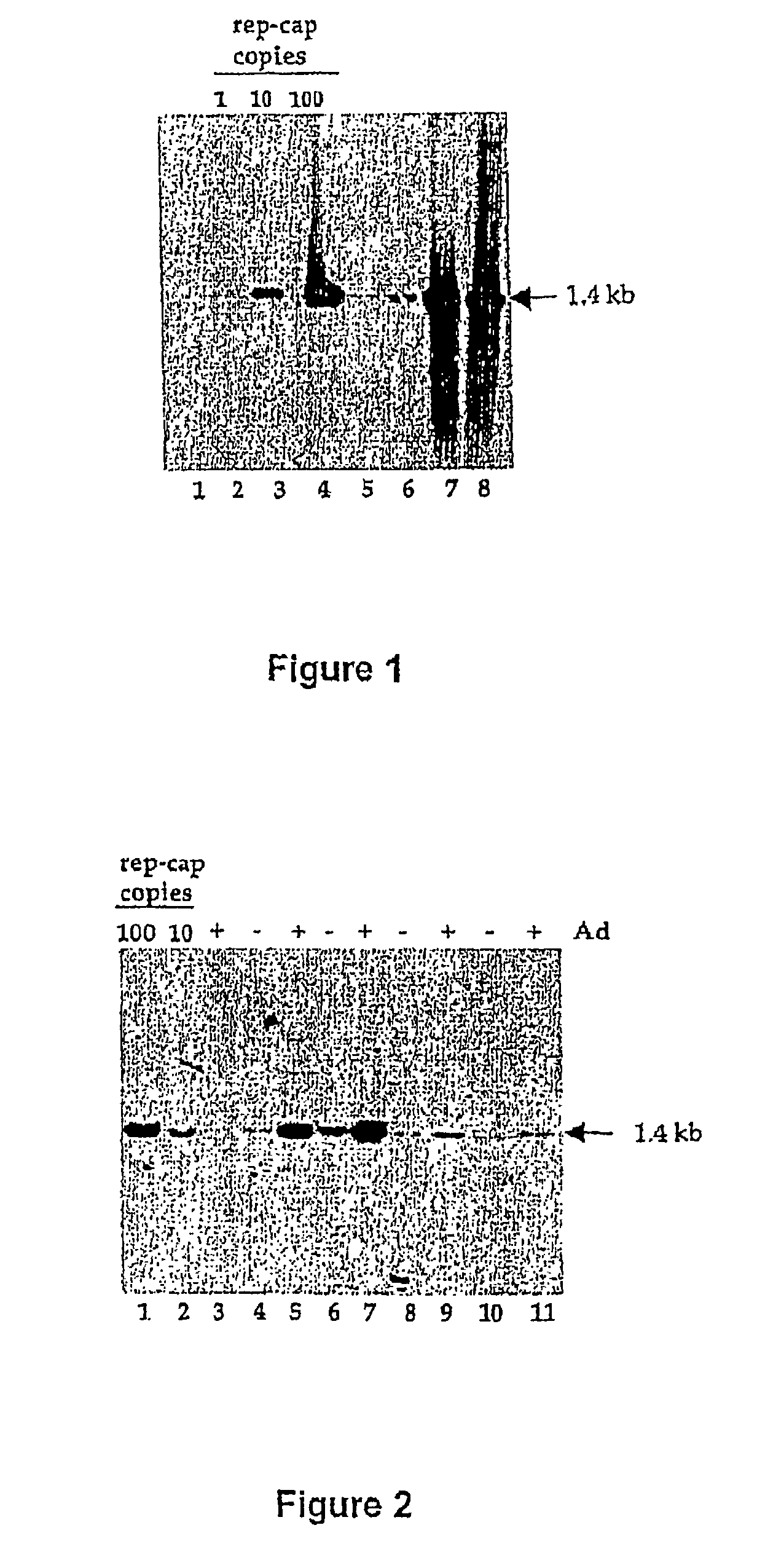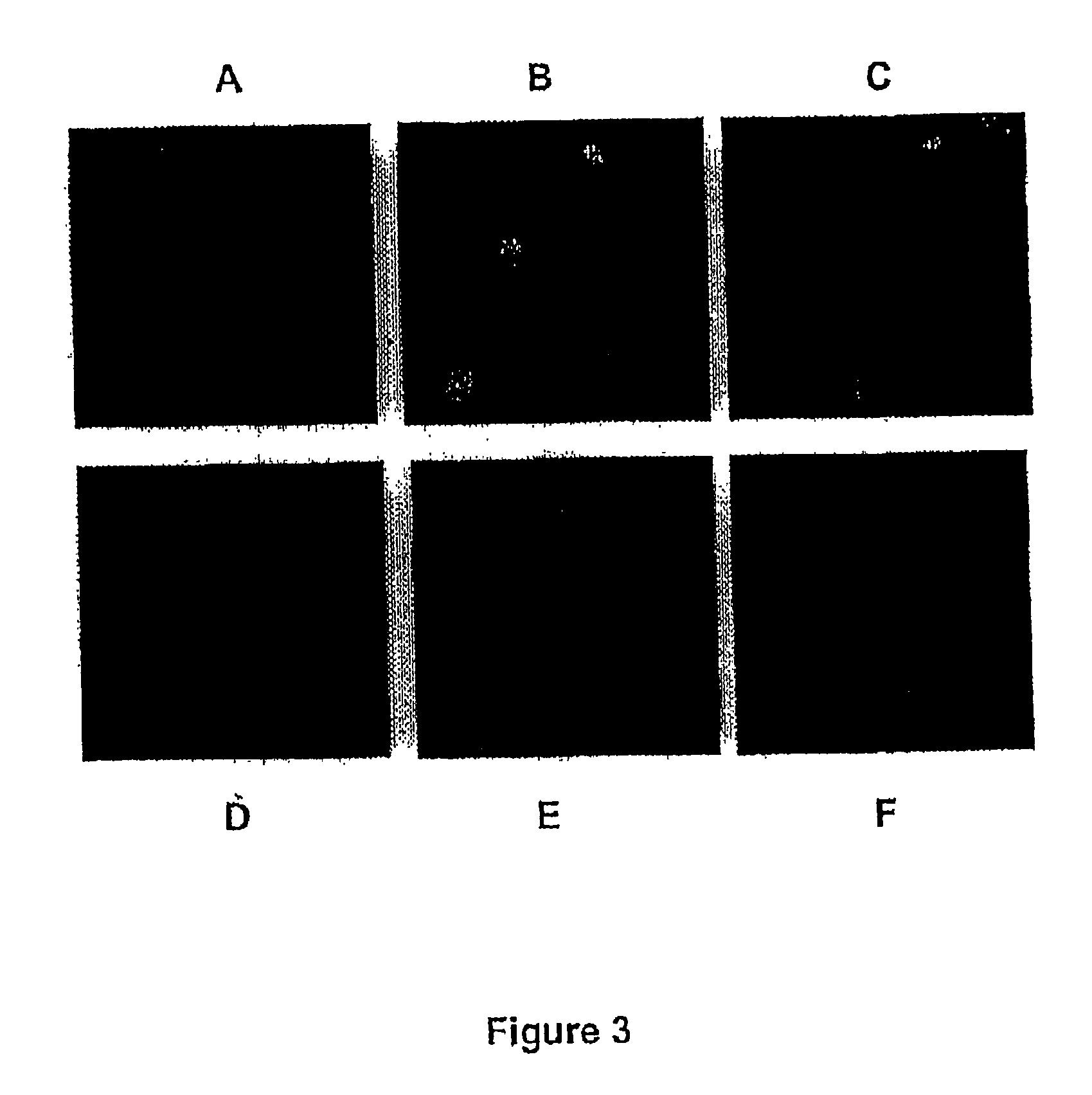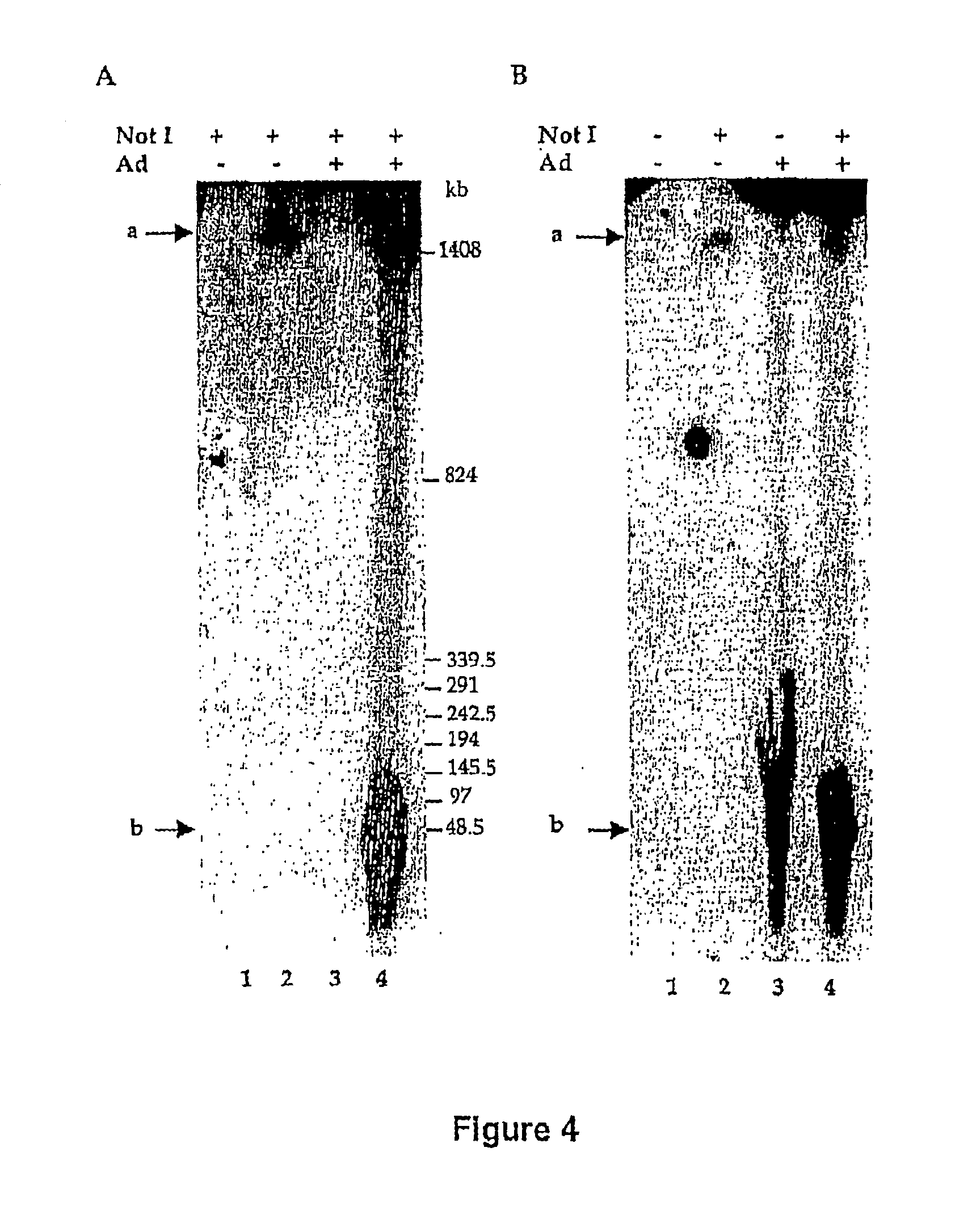Inducible highly productive rAAV packaging cell-lines
- Summary
- Abstract
- Description
- Claims
- Application Information
AI Technical Summary
Problems solved by technology
Method used
Image
Examples
example 1
AAV Rep-Cap Gene Amplification is Induced Preferentially in Adenovirus-Infected HeLa-Derived Cell Clones
[0116] The initial observation underlying this study was made using a Hela-derived cell clone harboring one integrated copy of an ITR-deleted rep-cap genome (HeRC32 cells) [7]. When HeRC32 cells were infected with wild type adenovirus, the integrated rep-cap copies underwent a dramatic amplification leading to a 100-fold increase in the rep-cap copy number, as evidenced by Southern blot analysis of total DNA and hybridization with a rep probe (FIG. 1). The determination of the rep-cap copy number at different time-points indicated that amplification occurred mainly between 24 and 48 hours following adenovirus infection. After the 48 hours time-point no significant increase was detected. To exclude the possibility that this phenomenon was due to an intrinsic property of the HeRC32 cell clone, the same analysis was performed with another Hela-derived rep-cap cell clone (B50), which ...
example 2
Amplified Rep-Cap Sequences are Extra-Chromosomal
[0118] The next question concerned the status of the amplified rep-cap sequences. The inventors wished to determine if the amplified rep-cap sequences are found in an integrated or in an extra-chromosomal form. For this, rep-cap sequences present in control and adenovirus-infected HeRC32 and B50 cells were analyzed by FISH. Metaphase spreads of uninfected cells confirmed the presence of rep-cap sequences in an integrated status in both cell clones (FIG. 3, panels A and D). The analysis performed 48 hours following adenovirus infection showed an increase in the rep-cap signal which appeared as a large dot (FIG. 3, panels B and E). This result illustrated the amplification phenomenon previously detected by Southern blot. However, because of the growth arrest induced by the adenovirus infection, it was not possible to visualize metaphases in these cells and, thus, to distinguish if the rep-cap signal following amplification co-localized ...
example 3
Cellular but not Adenoviral Polymerases are Involved in the Amplification Process
[0120] The above results indicated that upon adenovirus infection, integrated rep-cap sequences were amplified and extruded from the chromosomal structure. To further elucidate this phenomenon, it was important to determine if the amplification of rep-cap sequences resulted from the activity of cellular or adenoviral polymerases. To answer this question, rep-cap amplification was analyzed after infection of HeRC32 cells with an adenoviral mutant harboring a thermosensitive mutation in the E2b gene encoding for the viral polymerase (Adts149). HeRC32 cells were infected with Adts149 and maintained for 48 h at either 32.degree. C. (permissive temperature) or 39.degree. C. (non permissive temperature). Analysis of total DNA by Southern blot and hybridization with a rep probe indicated that inactivation of the adenoviral polymerase at 39.degree. C., did not inhibit rep-cap amplification, which reached a leve...
PUM
| Property | Measurement | Unit |
|---|---|---|
| Antisense | aaaaa | aaaaa |
Abstract
Description
Claims
Application Information
 Login to View More
Login to View More - R&D
- Intellectual Property
- Life Sciences
- Materials
- Tech Scout
- Unparalleled Data Quality
- Higher Quality Content
- 60% Fewer Hallucinations
Browse by: Latest US Patents, China's latest patents, Technical Efficacy Thesaurus, Application Domain, Technology Topic, Popular Technical Reports.
© 2025 PatSnap. All rights reserved.Legal|Privacy policy|Modern Slavery Act Transparency Statement|Sitemap|About US| Contact US: help@patsnap.com



